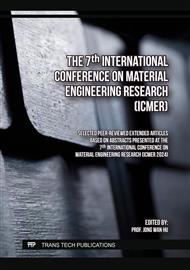p.25
p.35
p.45
p.53
p.63
p.71
p.83
p.91
p.107
The Effect of Polymer Amendment on the Colloidal Properties of a Waste K+- Rich Bentonite for Water-Based Drilling Fluid Applications
Abstract:
This research is concerned with the investigation of waste bentonite produced from a quarry in Cyprus, after being polymer-amended for use as a low-density solid additive in water-based drilling fluid systems (WBFS). According to API procedures, the waste bentonite samples are mechanically processed to a size < 63 μm and then activated with soda ash under “wet & thermal” conditions. The activated material is then used in the blending of actual WBF drilling fluid systems amended with polymers to obtain the desired colloidal properties because bentonite alone was not sufficient. For this procedure, three anionic polymers, Xanthan gum, CMC, and PAC-R were considered because they are very common as drilling fluid additives and under certain concentrations can help reach the desired colloidal properties of the WBFS. Results from this work show that minor polymer addition of all three polymers assists the waste material in reaching excellent filtration control qualifying the waste material according to API. Repurposing local waste clay material for drilling applications serves as a cost-effective solution leading to the management of local resources and aligning with environmental sustainability thus contributing to the circular economy principle.
Info:
Periodical:
Pages:
63-70
Citation:
Online since:
December 2024
Authors:
Price:
Сopyright:
© 2024 Trans Tech Publications Ltd. All Rights Reserved
Share:
Citation:



